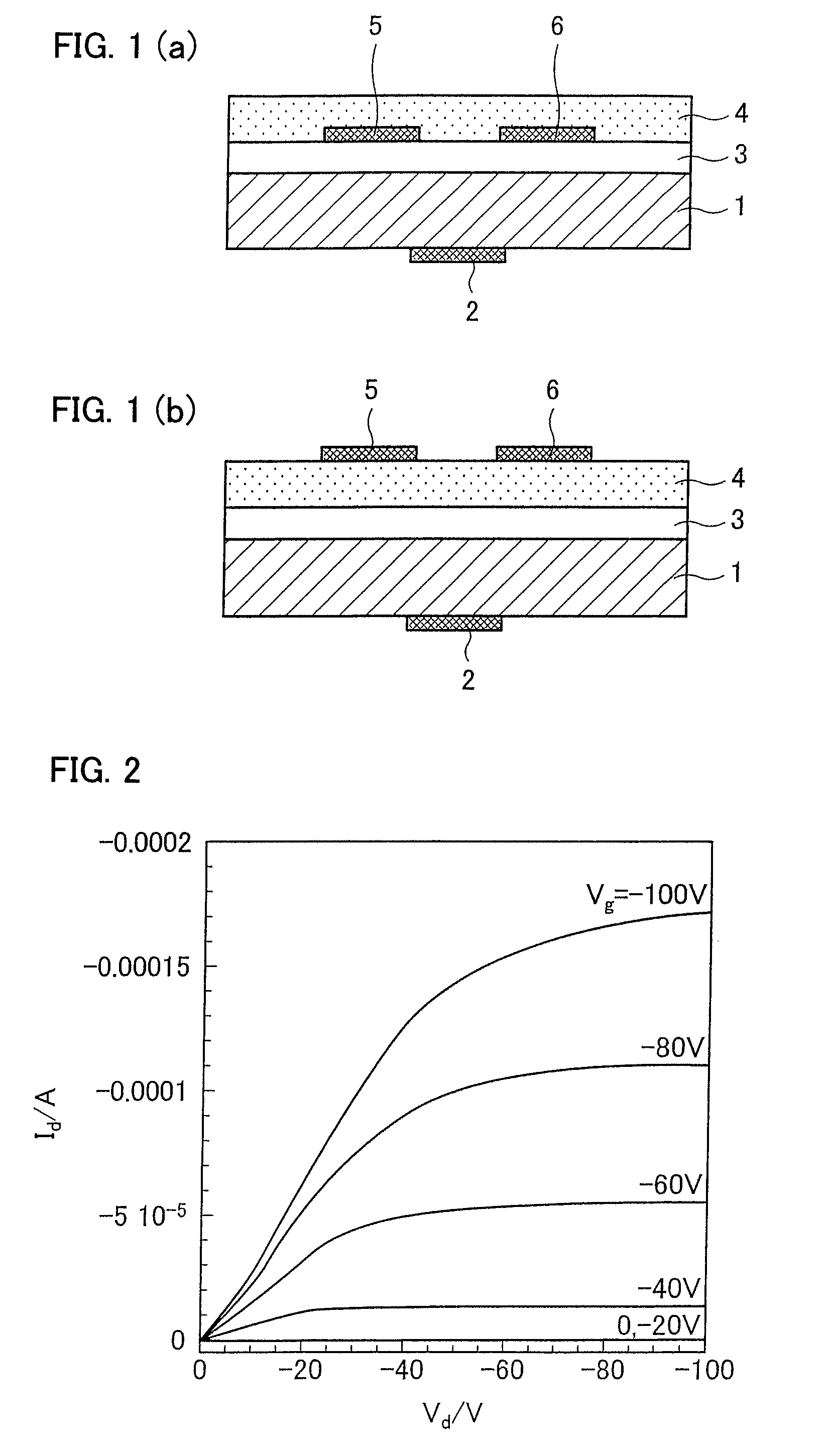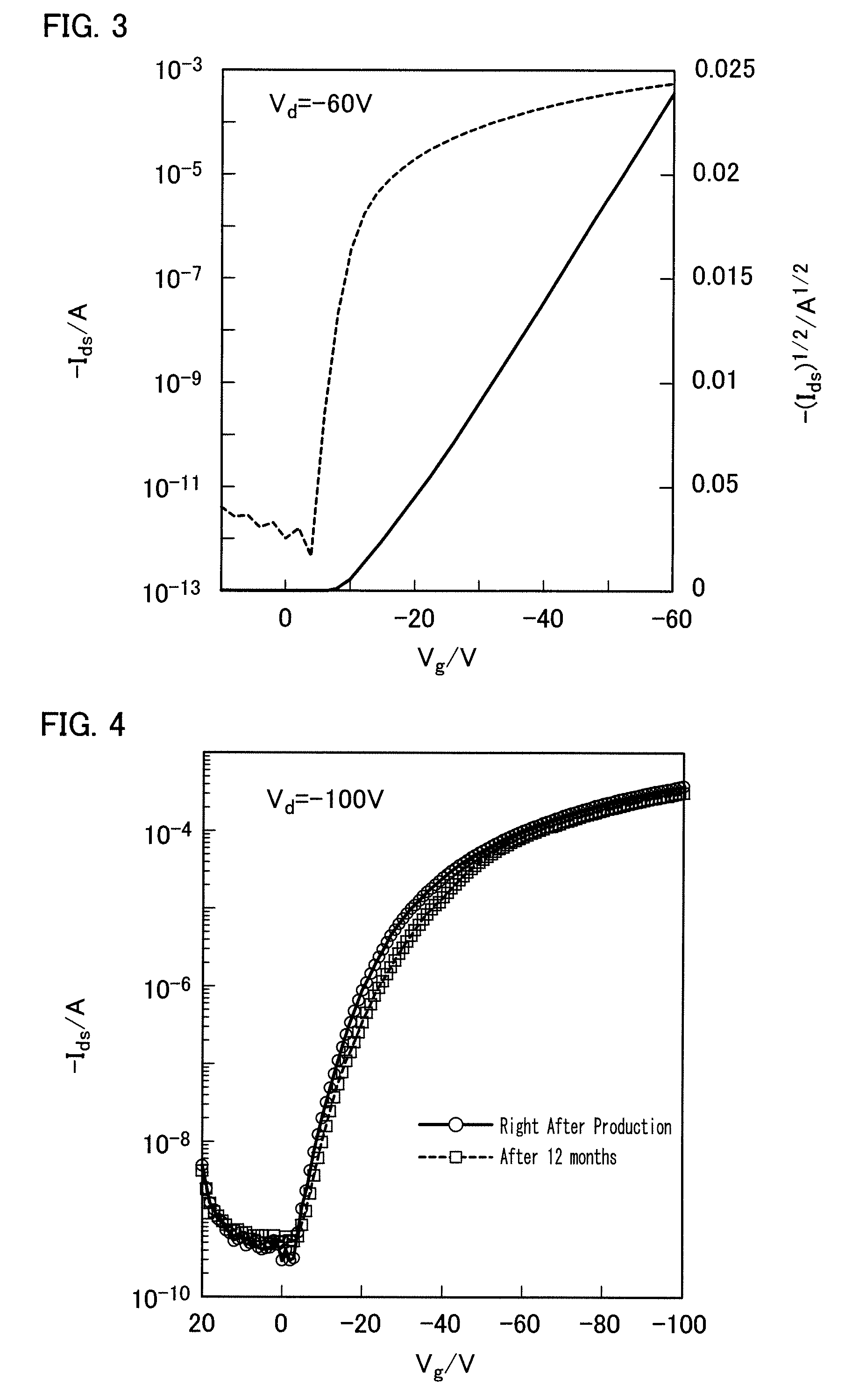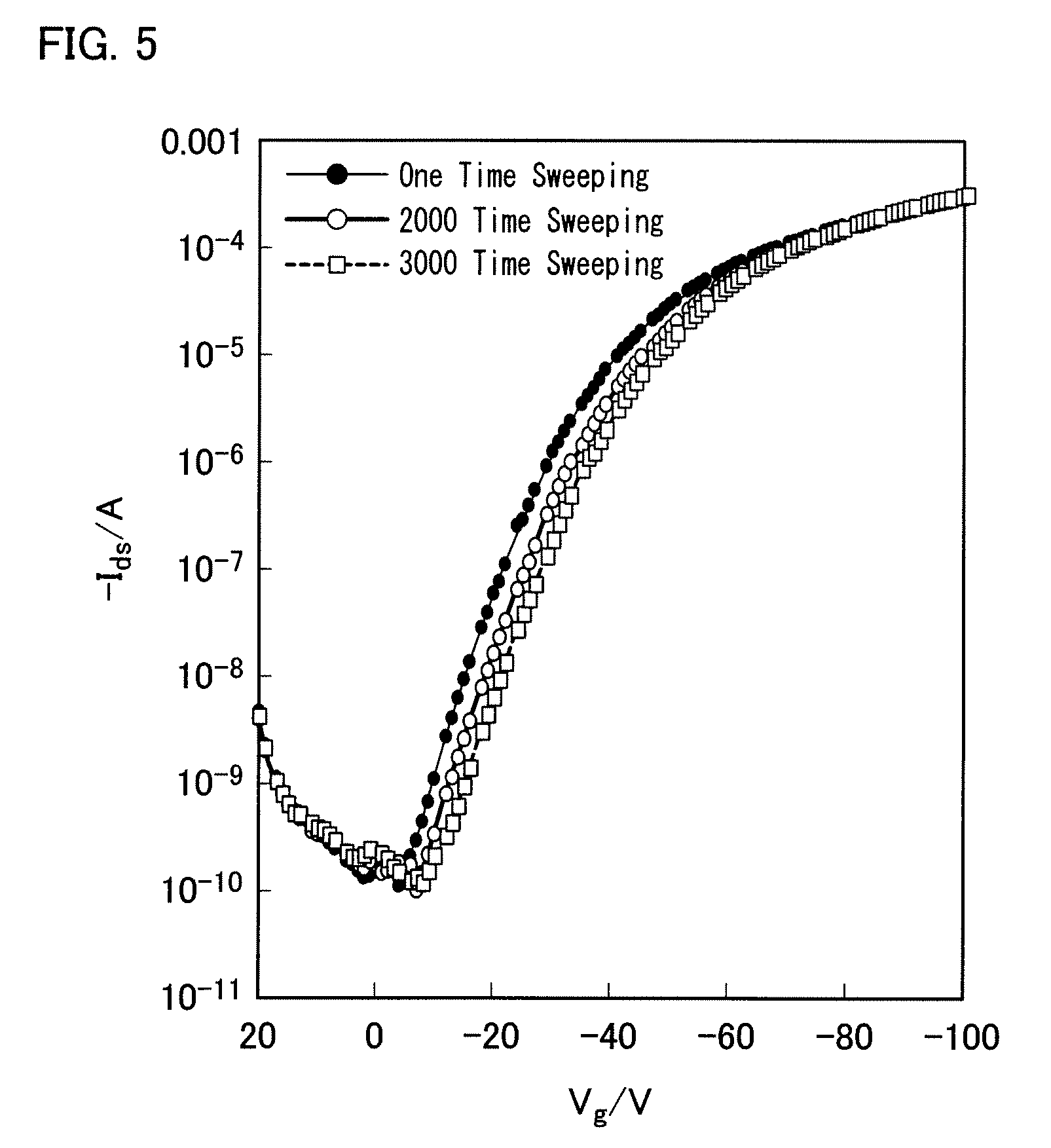Condensed polycyclic aromatic compound and use thereof
a polycyclic aromatic compound and condensed technology, applied in the field of condensed polycyclic aromatic compounds, can solve the problems that the practical use of organic fet devices cannot be realized, and achieve the effects of easy formation of thin films, small molecular size, and easy production
- Summary
- Abstract
- Description
- Claims
- Application Information
AI Technical Summary
Benefits of technology
Problems solved by technology
Method used
Image
Examples
example 1
Synthesis of Bis(4-biphenyl-il)acetylene (Compound 1)
[0152]
[0153]4-bromobiphenyl (5.0 g, 20 mmol) was dissolved in a mixture solvent of diisoprophylamine (40 mL)-benzoic anhydride (20 mL) under nitrogen atmosphere and then deaerated. In the solution thus prepared, trimethylsilylacetylene, (1.4 mL, 10 mmol), chlorobis(triphenylphosphine) palladium (0.84 g, 1.2 mmol), cuprous iodide (0.38 g, 2.0 mmol), diazabicycloundecene (DBU, 1.83 g, 0.94 mmol) and water (0.14 mL, 7.8 mmol) were added and stirred at 60° C. for 18 hours. The reaction completed, thereby precipitating a solid. After water (50 mL) was added thereto, the solid was filtered out. Then, the solid was washed with water, methanol, and hot hexane, and then dried under vacuum. The thus prepared solid was extracted with carbon disulfide and recrystallized, thereby obtaining a color-less plate-like crystal of bis(4-biphenyl-il)acetylene (Compound 1) of 1.01 g with a yield of 31%.
[0154]Melting Point: 256 to 258° C. (Literature va...
example 2
Synthesis of bis(3-selenomethyl-4-biphenyl-il)acetylene (compound 2)
[0158]
[0159]Into 3-necked 50 mL flask, potassium t-butoxide (0.89 g, 8.0 mmol), THF (15 mL) were added and cooled to −78° C. under nitrogen atmosphere. Then, 5.1 mL (8.0 mmol) of n-butyllithium-hexane solution of 1.54M was gradually dropped and then stirred for 10 min. After that, bis (4-biphenyl-il)acetylene (Compound 1) (1.0 g, 3.0 mmol) obtained in Example 1 was further added therein. The thus prepared reaction solution was stirred at −78° C. for 30 min, and then the temperature thereof was gradually increased to −30° C. Subsequently, the reaction solution was stirred at this temperature for 1.5 hours. After the reaction solution was cooled again to −70° C., selenium power (0.47 g, 60 mmol) was gradually added therein over 10 min, and then stirred at the maintained temperature for 30 min. Then, the temperature was increased to −20° C. over 2 hours. At this temperature, methyl iodine (0.5 mL, 8.0 mmol) was added. ...
example 3
Synthesis of 2,7-diphenyl-[1]benzoseleno[3,2-b][1]benzoselenophene (compound 3)
[0167]
[0168]After bis(3-selenomethyl-4-biphenyl-il)acetylene (compound 2) (0.9 g, 1.7 mmol) thus obtained in Example 2 was dissolved in chloroform (20 mL) at the room temperature, iodine (6.9 g, 27 mmol) was added and refluxed for 12 hours. After the reaction was completed, a precipitated solid was filtered out. The resultant solid was washed with saturated sodium hydrogen sulfite aqueous solution so as to remove free iodine, and subsequently washed with water (20 mL), methanol (20 mL), and then hot hexane (20 mL), thereby obtaining 2,7-diphenyl-[1]benzoseleno[3,2-b][1]benzoselenophene (compound 3) (0.75 g, 90%) in a form of white solid. Then, 2,7-diphenyl-[1]benzoseleno[3,2-b][1]benzoselenophene (compound 3) was refined by temperature gradient sublimation under reduced pressure, so as to obtain a material of a device.
[0169]Melting Point: >300° C.
[0170]1H NMR (CDCl3) δ8.14 (d, J=1.5 Hz, 2H), 7.83 (d, J=8....
PUM
| Property | Measurement | Unit |
|---|---|---|
| temperature | aaaaa | aaaaa |
| temperature | aaaaa | aaaaa |
| temperature | aaaaa | aaaaa |
Abstract
Description
Claims
Application Information
 Login to View More
Login to View More - R&D
- Intellectual Property
- Life Sciences
- Materials
- Tech Scout
- Unparalleled Data Quality
- Higher Quality Content
- 60% Fewer Hallucinations
Browse by: Latest US Patents, China's latest patents, Technical Efficacy Thesaurus, Application Domain, Technology Topic, Popular Technical Reports.
© 2025 PatSnap. All rights reserved.Legal|Privacy policy|Modern Slavery Act Transparency Statement|Sitemap|About US| Contact US: help@patsnap.com



